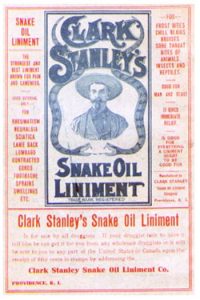Castor Oil: Magic or Myth (Part 1)
Vis Medicatrix Naturae
Marisol Teijeiro, ND
Walk into any health food store, talk to any naturopathic physician, midwife, nurse, medical doctor, herbalist, or functional medicine practitioner, and ask them about castor oil. You will receive polar responses, as to their emotions and experience with it.
Those who love the oil, live by the oil. I confess, I am now “one of those” – a self-proclaimed castor oil hippie. I use castor oil in a variety of contexts, from the sacred health-promoting ritual of the castor oil pack, to oil-pulling, treatment of skin conditions, beauty care, digestion, laxation, topical nutrition… the list goes on and on. Undeniably, it is one of the most important agents in my medicine cabinet and in my patients’ cabinets as well. Like the father in the movie, My Big Fat Greek Wedding, who put Windex on everything, I use castor oil (in different ways) on everything.
Look, you may be hesitant to use it in your practice, resistant to it, even. As a natural health practitioner, you have heard so much about it. How can a single oil do so many things? It sounds like one of the “snake oils” promoted at the turn of the century. Obviously, as a renegade healthcare practitioner that is on the outside of the conventional system, the last thing you want to do is promote something that is unscientific and not evidence-based.

Figure 1. Snake Oil Liniment ad
The irony here is that castor oil offers even more than its claims, and research that has been conducted in the last 20-30 years demonstrates this. I also used to be a non-believer – the person who would shift the conversation away from the incredible nature of the oil and comment solely from my ignorance about its messiness, stickiness, and (the unflattering reputation) of being someone who’d never want to work with it. Worse, I would propagate myths about its nature, claiming the supposed dangers of this oil and the lack of research behind it. These are all untrue stories that have given this oil a bad reputation. I know better now.
I have a rule in my practice: I try everything on myself before passing judgment or using it on a patient, with only a few exceptions, for obvious reasons. For some reason, I hadn’t given this oil a chance; I hadn’t even tried it. First, because of the messiness and the time it took to prepare a castor oil pack. This was what I had to overcome and figure out how to do differently. I also feared being mislabeled as a doctor of “woo-woo” medicine. My son refers to it – and I quote – as “hippie bullsh*t.” I actually take it as a compliment now.
I once found myself in that camp. But it was my exposure to castor oil, which came in the form of repeated reminders about adopting it into my life practice (almost to the point of annoyance), that I came to a point of a health crisis that challenged my dream of completing my naturopathic medical training and becoming a naturopathic doctor. This is when I was finally enticed to give the castor oil pack a try, because nothing else was working. It seemed that I was doing everything else I should be doing – the herbs, the supplements, the lifestyle practices (diet and exercise) – but I wasn’t getting better. I had no other options to get me out of the most fearful time of my life, when intense fatigue prohibited me – a normally active, full-of-life person – from even being able to get out of bed.
I’m here now to set the record straight on how this oil can serve as a foundational health practice for your patients, most importantly through the castor oil pack.
What’s Old is New Again
The irony is that castor oil has a long history of use throughout the ages in food, industrial, cosmetic, and medical industries. This unique oil demonstrates its versatility in medicine, as it can be used both internally and topically for a multitude of purposes. The research behind its chemistry, eclectic, and anecdotal usage, as well as the modern-day scientific evidence that supports its use, is abundant. I’m very excited to dispel the myths, clarify this mysterious “non-snake” oil, and share my passion for it with you.
After all, castor oil has become my first prescription, my first personal go-to, and what I preach about the most… because, frankly, after you’ve seen what I’ve seen, heard the reports of many doctors, patients, and sages, and dissected the research, there is no going back. Get ready to open your mind, and let’s dive into this sacred health ritual to learn why castor oil and castor oil packs are an excellent example of the old saying, “What’s old is new again.”
I will be covering the topic in several installments. I will be starting here with the history, then evolving into the biochemistry, conventional and alternative uses, and even the cosmetic usage of this incredible oil.
The Reign of Castor Oil & Castor Oil Packs
Castor oil deserves to claim its place back on the throne as the most unique, healing vegetarian oil that exists in the world. In part, its legendary use dates back to the beginning of evolved humans, and offers us, in 1 simple substance, a multipurpose healing panacea. This is often seen in herbal medicine. Take the example of Schisandrae chinensis Fructus, or Wu Wei Zi, a folk medicine in Asia that has multiple well-known usages, yet it is a single herb.1 This is the case with much of herbal medicine, and castor oil is no exception.
Castor oil on its own exerts a medicinal effect; however, the castor oil pack is an at-home, (now easy-to-do) practice that enhances all other treatments and tools you are using for health optimization, by creating the foundation for healing. This saves you and your patients both time and money and improves your patient outcomes. I have seen this repeatedly in practice, and I’m not the only one.

Figure 2. Castor Oil Pack
How does castor oil achieve this? Partly due to its unique chemical structure and how it functions in our ever-evolving physiology – one it has worked with over the centuries. For the castor oil pack, it is the mere genius of combination with our wellness practices that allows it to set the foundation for our health. Both animal and human studies have demonstrated that it does this by supporting the pillars that promote proper functioning of the digestive tract,2,3 antioxidant status,4 balanced inflammation,5 stress regulation,6,7 and an improved host microbiome.8-10 The castor oil pack helps to make all of our healthcare tools, treatments, food, and supplements work that much better.
Pharmacognosy of Castor Oil
The castor oil plant, which belongs to the Euphorbiaceae family, is known by its Latin name, Ricinus communis. Ricinus is the Latin word for tick, named as such because the seeds resemble a blood-filled tick. Could this perhaps be a sign, according to the doctrine of signatures, of its medicinal effectiveness in tick-borne diseases such as Lyme? Just a thought, but an interesting one, as castor oil packs are often used to support this condition.

Figure 3. Castor Oil Plant
The healing oil, which is also commonly referred to as the oil of Palma Christi (ie, Palm of Christ),11 is extracted from the bean or seed of the castor oil plant. The bean itself is poisonous, due to the lectin protein, ricin, which is used in both chemical and biological warfare. Ricin is toxic to humans because it attaches to the cell membrane of human erythrocytes, which contain specific protein receptors for the lectins of Ricinus communis.12 Fortunately, the oil extracted from the bean is completely ricin-free and therefore non-toxic.13 This is highly important to note, because much controversy surrounds the possible presence of the lectin in the oil, and some people assume that it is the lectin component that produces laxation via intoxication and poison!
Fortunately, this is not its mode of action, although it has also been postulated that castor oil is an irritant or stimulant laxative; this claim has been disputed.14 For laxation, animal studies have shown that the oil is actually quite beneficial to the intestine, stimulating the gasotransmitter nitric oxide,15 which promotes a shift in electrolytes16 and stimulation of smooth muscle contraction via prostaglandin E3 (PGE3).3
Excessive oral usage of castor oil can produce an adverse effect on the mucosal membrane of the intestine. The effect has been shown in rabbit ileum to be similar to that produced by fatty acids, indicating that excessive use of castor oil (as with all fats) can potentially cause damage and create a similar environment in the intestine as with steatorrheal disease.17
The versatility of the castor oil plant always astounds me. It has the capacity to be one of the most well-known therapeutic substances since the beginning of evolved man, or at least from what we know, but at the same time it has the ability to kill us. It feels to me as though this plant is the perfect expression of Yin and Yang – the balance we find in all things in life.
Chemistry of Castor Oil
Castor oil is a vegetable oil, composed of a triglyceride molecule that consists of a glycerol backbone and 3 fatty acid chains. Ninety-percent of the fatty acid chains of castor oil is ricinoleic acid, with the remainder being a combination of oleic and linoleic acids. The signature of castor oil is the high content of ricinoleic acid. Only found in castor oil, ricinoleic acid is unique in that it is an unsaturated fatty acid with a hydroxyl end on the twelfth carbon, also known as a fatty hydroxyacid. This gives it unique properties, such as being soluble in alcohol, and allows it to be very versatile across many different industries.18 The ricinoleic acid chains also look very much like PGE3, an immune system messenger and the end-product of ingested fish oils, or eicosapentaenoic acid (EPA). In the human body, EPA has anti-inflammatory effects and counteracts arachidonic acid.19
Another unique aspect of castor oil is that the molecular weight (MW) of its main component, ricinoleic acid, is 298 Da.20 A MW under 500 Da allows a substance to be transdermally absorbed into the circulation rather than remaining above the stratum corneum and acting as an emollient.21 Due to its low MW, castor oil functions both as a convenient transdermal therapy on its own and as the king of carrier oils for other substances, such as essential oils.
The research isn’t exactly clear as to what happens once castor oil is absorbed transdermally. When castor oil is absorbed orally, a metabolic urine waste product, known as epoxy-dicarboxylic acid, is produced. With topical application, this product is not demonstrated to be outside of normal physiological ranges. Either castor oil is not absorbed topically, or the metabolism of its transdermal absorption is unknown.22 In my opinion, it’s likely the latter. There are so many clinically reinforced benefits and patient reports that I personally cannot fathom the possibility of it not absorbing, but perhaps it is my bias. However, clinical practice for over a decade does teach you a thing or 2.
Quality
Medicinal or therapeutic-grade castor oil should be “first quality,” otherwise known in the oil world as “extra virgin,” meaning that it has been cold-pressed without the use of solvents such as hexane. First-quality oil is virtually colorless, odorless, has a very low acidity, and very high nutrient and antioxidant profile.23
Antioxidants found in extra virgin castor oil include fat-soluble vitamins such as vitamin E, omega-6 and omega-9 fatty acids, flavonoids, phenolic acids, and much more.23 It is very important to know the quality of the oil that you are using, since this can impact your treatment significantly. If the oil isn’t of the highest quality, its low nutrient profile and higher acidity can have the opposite effect of being anti-inflammatory.
An additional note here is the importance of selecting an organic oil over a conventionally produced one, as the former would have less toxicity. Pesticides, as an example, have a tendency to bioaccumulate in fats.24 Fats such as castor oil have a predisposition to carry substances that are lipophilic.
Why Castor Oil Must Be in a Glass Bottle
Castor oil is the master carrier oil, due to its structure and the MW of ricinoleic acid. Because of this amazing capability to transport and transfer substances into the body, it is of the utmost importance to only use a high-quality oil that is organic.
If packaged in plastic, castor oil will absorb chemicals from the plastic bottle and then carry them into the body when the oil is applied to the delicate skin of the human body. Even bisphenol A (BPA)-free plastic does not suffice, as there are many more plastic chemicals present than BPA, eg, phthalates; and if they have not been polymerized, they will leach out into the oil. There are also ultraviolet (UV) filters in plastic bottles, such as benzophenones, that are endocrine-disrupting. These benzophenones, sadly, are also used in sunscreens to block UV light. They have been found to increase carcinogenic risk of keratinocytes (skin cells that make up 90% of the epidermis or top layer of skin) in combination with UV light.25 In plastic production there is also a slip agent called nonylphenol, which is found on the insides of bottles if not washed out before production. Nonylphenol has been found to be endocrine-disrupting and toxic to keratinocytes, causing dose-dependent DNA damage.26
These are only the chemicals that we have been made aware of; however, there are undoubtedly many more that have not yet been exposed to the extent that BPA has, for example.27
In contrast to plastic, inert packaging such as glass will prevent any transfer of chemical components that are damaging to the body, whether endocrine, neurological, or immune-disrupting. Thus, always purchase castor oil in a glass bottle, never in plastic. I am astounded by the fact that in the United States it is incredibly difficult to find castor oil in a glass bottle in the major health-food store chains. It’s time we educate and challenge these promoters of health to select the right type of castor oil – in a glass bottle. If you have castor oil in a plastic bottle at home or in your clinic, please make the shift. Throw it away now.
Closing Comments
This is an interesting first bite into why this legendary castor oil has withstood the test of time, and continues to be used in the naturopathic professional practice in the 2000s. Castor oil has already been in use for over 6000 years. Stay tuned for what you will learn in the next exposé on castor oil, and you’ll understand why it’s likely going to be around for at least 6000 more. We will delve into the history and conventional medicine uses of this incredible vegetarian oil.
Conflicts of Interest: Dr Marisol Teijeiro is a naturopathic doctor and has a financial interest in Queen of the Thrones Inc™ – creators of castor oil packs, products, and online education.
Read part 2 here
Read part 3 here
References:
- Chen S, Shi J, Zou L, et al. Quality Evaluation of Wild and Cultivated Schisandrae Chinensis Fructus Based on Simultaneous Determination of Multiple Bioactive Constituents Combined with Multivariate Statistical Analysis. Molecules. 2019;24(7). pii: E1335. doi: 10.3390/molecules24071335.
- Arslan GG, Eşer I. An examination of the effect of castor oil packs on constipation in the elderly. Complement Ther Clin Pract. 2011;17(1):58-62.
- Tunaru S, Althoff TF, Nüsing RM, et al. Castor oil induces laxation and uterus contraction via ricinoleic acid activating prostaglandin EP3 receptors. Proc Natl Acad Sci U S A. 2012;109(23):9179-9184.
- Holm T, Brøgger-Jensen MR, Johnson L, Kessel L. Glutathione preservation during storage of rat lenses in optisol-GS and castor oil. PLoS One. 2013;8(11):e79620.
- Vieira C, Evangelista S, Cirillo R, et al. Effect of ricinoleic acid in acute and subchronic experimental models of inflammation. Mediators Inflamm. 2000;9(5):223-228.
- Walker SC, Trotter PD, Swaney WT, et al. C-tactile afferents: Cutaneous mediators of oxytocin release during affiliative tactile interactions? Neuropeptides. 2017;64:27-38.
- Rolls ET, O’Doherty J, Kringelbach ML, et al. Representations of pleasant and painful touch in the human orbitofrontal and cingulate cortices. Cereb Cortex. 2003;13(3):308-317.
- Andrade IM, Andrade KM, Pisani MX, et al. Trial of an experimental castor oil solution for cleaning dentures. Braz Dent J. 2014;25(1):43-47.
- Badaró MM, Salles MM, Leite VMF, et al. Clinical trial for evaluation of Ricinus communis and sodium hypochlorite as denture cleanser. J Appl Oral Sci. 2017;25(3):324-334.
- Salles MM, Badaró MM, Arruda CN, et al. Antimicrobial activity of complete denture cleanser solutions based on sodium hypochlorite and Ricinus communis – a randomized clinical study. J Appl Oral Sci. 2015;23(6):637-642.
- Irwin R. NTP technical report on the toxicity studies of Castor Oil (CAS No. 8001-79-4) in F344/N Rats and B6C3F1 Mice (Dosed Feed Studies). Toxic Rep Ser. 1992;12:1-B5.
- Jenkins RE, Tanner JA. The structure of the major protein of the human erythrocyte membrane. Characterization of the intact protein and major fragments. Biochem J. 1977;161(1):139-147.
- [No authors listed]. Final report on the safety assessment of Ricinus Communis (Castor) Seed Oil, Hydrogenated Castor Oil, Glyceryl Ricinoleate, Glyceryl Ricinoleate SE, Ricinoleic Acid, Potassium Ricinoleate, Sodium Ricinoleate, Zinc Ricinoleate, Cetyl Ricinoleate, Ethyl Ricinoleate, Glycol Ricinoleate, Isopropyl Ricinoleate, Methyl Ricinoleate, and Octyldodecyl Ricinoleate. Int J Toxicol. 2007;26 Suppl 3:31-77.
- Gaginella TS, Stewart JJ, Olsen WA, Bass P. Actions of ricinoleic acid and structurally related fatty acids on the gastrointestinal tract. II. Effects on water and electrolyte absorption in vitro. J Pharmacol Exp Ther. 1975;195(2):355-361.
- Mascolo N, Barbato F, Grumetto L, Quaglia F. Ricinoleic acid, the active ingredient of castor oil, increases Nitric Oxide Synthase activity in the rat ileum and colon. Pharm Biol. 2008;35(5):364-370.
- Izzo AA, Mascolo N, Capasso F. Nitric oxide as a modulator of intestinal water and electrolyte transport. Dig Dis Sci. 1998;43(8):1605-1620.
- Gaginella TS, Phillips SF. Ricinoleic acid (castor oil) alters intestinal surface structure. A scanning electronmiscroscopic study. Mayo Clin Proc. 1976;51(1):6-12.
- van Erp H, Bates PD, Burgal J, et al. Castor phospholipid:diacylglycerol acyltransferase facilitates efficient metabolism of hydroxy fatty acids in transgenic Arabidopsis. Plant Physiol. 2011;155(2):683-693.
- Djuric Z, Aslam MN, Simon BR, et al. Effects of fish oil supplementation on prostaglandins in normal and tumor colon tissue: modulation by the lipogenic phenotype of colon tumors. J Nutr Biochem. 2017;46:90-99.
- com. Ricinoleic Acid. Last updated July 31, 2019. Available at: https://www.drugs.com/international/ricinoleic-acid.html. Accessed July 20, 2019.
- Scheindlin S. Transdermal drug delivery: PAST, PRESENT, FUTURE. Mol Interv. 2004;4(6):308-312.
- Mein EA, Richards DG, McMillin DL, Nelson CD. Transdermal Absorption of Castor Oil. Evid Based Integr Med. 2005;2(4):239-244.
- Marwat SK, Rehman F, Khan EA, et al. Review – Ricinus communis – Ethnomedicinal uses and pharmacological activities. Pak J Pharm Sci. 2017;30(5):1815-1827.
- Lushchak VI, Matviishyn TM, Husak VV, et al. Pesticide toxicity: a mechanistic approach. EXCLI J. 2018;17:1101-1136.
- Amar SK, Goyal S, Srivastav AK, et al. Combined effect of Benzophenone-2 and ultraviolet radiation promote photogenotoxicity and photocytotoxicity in human keratinocytes. Regul Toxicol Pharmacol. 2018;95:298-306.
- Kim H, Oh S, Gye MC, Shin I. Comparative toxicological evaluation of nonylphenol and nonylphenol polyethoxylates using human keratinocytes. Drug Chem Toxicol. 2018;41(4):486-491.
- Son S, Nam K, Kim H, et al. Cytotoxicity measurement of Bisphenol A (BPA) and its substitutes using human keratinocytes. Environ Res. 2018;164:655-659.
 Marisol Teijeiro, ND, is the director of Sanas Health Practice, in Petersburg, Ontario. Her focus is on cleansing and gut health, and she’s appropriately been dubbed the Queen of the Thrones™ by her patients as she’s helped thousands overcome digestive issues and take control of their toilet troubles. She has spearheaded the Queen of the Thrones™ line of lifestyle entrainment products that includes an easy, mess-less castor oil pack and castor oil in a glass bottle. Dr Marisol speaks internationally at educational conferences for practitioners, teaches a course on castor oil at CCNM, and will be releasing her debut guide book on digestive health, Oh Sh*t, later this year.
Marisol Teijeiro, ND, is the director of Sanas Health Practice, in Petersburg, Ontario. Her focus is on cleansing and gut health, and she’s appropriately been dubbed the Queen of the Thrones™ by her patients as she’s helped thousands overcome digestive issues and take control of their toilet troubles. She has spearheaded the Queen of the Thrones™ line of lifestyle entrainment products that includes an easy, mess-less castor oil pack and castor oil in a glass bottle. Dr Marisol speaks internationally at educational conferences for practitioners, teaches a course on castor oil at CCNM, and will be releasing her debut guide book on digestive health, Oh Sh*t, later this year.










